( – promoted by navajo)
Tiwi-teqis, later known to the Americans as Old Chief Joseph, was born between 1785 and 1790 in Oregon. He became the principal leader of the Wallowa Nez Perce sometime in the first half of the nineteenth century. This was prior to the creation of reservations for the Indians of Oregon, Washington, and Idaho.
During his life he saw the impact of the fur trade, the coming of Christian missionaries, and the arrival of American settlers. To give these settlers free land, the United States government sought to move the Nez Perce onto a reservation in Idaho. Joseph, as a traditional Nez Perce leader, resisted the government’s attempts to move him from his homeland and to convert him to Christianity.
The traditional homelands of the Nez Perce included northeastern Oregon, southeastern Washington, and central Idaho. Unlike many other Native American tribes, the Nez Perce do not have a tradition of migration: their oral history states that they were created at Kamiah, on the Clearwater River in Idaho.
Traditional Nez Perce Government:
Politically the Nez Perce tribe was composed of a number of different autonomous bands, each with its own leadership and territory. In the mid-nineteenth century it is estimated that there were about 40 of these bands. Each band had a prominent leader, often called “chief” by the Americans.
In actuality, each band often had several chiefs. One of these, often considered the headman or main chief, functioned as a civil chief. Other leaders functioned as war chiefs and hunt chiefs. Joseph was a civil chief, or peace chief.
The headman or chief of each Nez Perce band served to act as spokesman for the band, to oversee the well-being of band members, to arbitrate disputes, and to provide an example of outstanding and generous conduct. The chief shared his wealth with the needy.
Nez Perce leadership depended on persuasive abilities and public opinion. No one, including the chiefs, would presume to tell another person how to live or what to believe.
Nez Perce Religion and Christianity
Nez Perce spirituality centered on the wéyekin or tutelary spirit. These were animistic spirits which appeared to individuals in dreams and in real life. These spirits were sought during the vision quest undertaken by all Nez Perce youth prior to adulthood. It was important for an individual to obtain the help of the wéyekin in order to be successful in life. Success in life was seen not so much as the result of individual action, but as the result of having help of the wéyekin. Individuals who were considered to be very successful were felt to have powerful wéyekin.
The Nez Perce were first exposed to Christianity through traders rather than missionaries. Seeing the material wealth of the traders, and interpreting this wealth within the Nez Perce worldview, it was believed that the traders had to have a powerful tutelary spirit. Thus, some Nez Perce sought out this new tutelary spirit. They viewed this as an addition to their traditional religious worldview, not a replacement of it.
The first missionary sent to the Nez Perce didn’t stay very long. In 1834, the Methodist Missionary Board sent Jason Lee to establish a mission among the Flathead. He met with the Flathead and Nez Perce at the Green River Rendezvous in Wyoming. He finds the Indians deeply unsettling. He concluded that the Indians were slaves to Satan and to alcohol. Instead of establishing an Indian mission, he continued his journey west to Fort Vancouver.
In 1836, The Presbyterians established a mission among the Nez Perce in Idaho. The missionaries saw themselves as the saviors of the Nez Perce, a people who they felt had no religion. They had little tolerance for Nez Perce culture. However, many Nez Perce were baptized, an action, from their religious view, which would bring them into contact with this new tutelary spirit.
Tiwi-teqis was baptized by the Christian missionaries in 1839 and was given the name Joseph. However, he soon renounced Christianity in favor of the traditional ways. He was more favorably oriented toward the teachings of Smohalla, the prophet who founded the Dreamer Religion, than Christianity.
For the Nez Perce, Christianity became a force which divided the tribe. For some of the bands in Idaho, Christianity was seen as a new way, a way of living with the changing universe. For the bands outside of Idaho, such as those in the Wallowa Valley in Oregon, Christianity had little appeal.
The Treaties:
Soon after the United States acquired the right to govern Oregon Territory (which included Oregon, Washington, Idaho, and western Montana), the government sought to move the Indian nations onto one or two reservations so that the land could be opened up for American settlement. On the reservations, the goal was to convert the Indians to Christianity and to have them take up farming on individually owned parcels of land.
In 1855, the American government brought together a number of tribes for a treaty conference at Walla Walla, Washington. Among other things, the purpose of the council was to establish a reservation for the Nez Perce. The Americans told the Indians:
“We want you and ourselves to agree upon tracts of land where you will live; in those tracts of land we want each man who will work to have his own land, his own horses, his own cattle, and his own home for himself and his children.”
Nez Perce leader Lawyer told his people that the agreement with the Americans would protect their villages from the Americans and that without it, the Americans would simply take their lands. Joseph asked that the Americans include his peoples’ Wallowa valley in the Nez Perce reservation. Joseph did not sign the treaty. In the words of his son, also known as Chief Joseph, Old Joseph
“claimed that no man owned any part of the earth, and a man could not sell what he did not own.”
Ignoring what Joseph and the other Nez Perce leaders had told them, the American government simply proceeded under the legal fiction that the Nez Perce were a single political entity and appointed Lawyer as the supreme chief. In the eyes of the Americans, but not the Nez Perce, this meant that Lawyer could sign away Nez Perce land.
In the process of ratifying the treaty in 1859, the United States Senate reduced the size of the Nez Perce Reservation from 13,200,000 acres to 7,787,000 acres. The Nez Perce were not consulted in this action.
By 1859 the Nez Perce were badly divided. About two-thirds of the bands were under the leadership of Lawyer who felt that the people should work under the laws imposed on them by the Christian missionaries, soldiers, and Indian agents. The other Nez Perce, including Joseph’s Wallowa band, wanted to retain their aboriginal ways.
In 1861, thousands of American settlers moved on to Nez Perce land in Oregon’s Wallowa Valley. They knew that this action was illegal, but were counting on the government to buy them out in order to preserve the peace. Instead, the government announced that it did not intend to annex the Wallowa Valley and that it would not reimburse settlers who had moved onto Indian land illegally. As a result, tremendous pressures were brought on the Army and the Indian commissioners to remove the Indians.
At this same time, most of the members of Joseph’s band of Nez Perce adopted the Dreamer Religion of the Wanapum prophet Smohalla.
In 1862, the Nez Perce received the first of the annuities promised them in the 1855 treaty. The payment was significantly less than it was supposed to be and Lawyer realizes that he and his people are being cheated.
In 1863, the Americans force another treaty upon the Nez Perce, one that is intended to reduce their reservation by 7 million acres and allow them to retain only 785,000 acres. In addition, all of the bands are to move onto the reduced reservation. The Americans tell the Nez Perce:
“We come as your friends, to advise with you, and to arrange for the preserving of your rights. As your friends we propose to you to relinquish to the United States a part of your present Reservation, and to take a new Reservation, smaller than the one you now hold. We also propose that on this new Reservation, each man or family shall have a piece of land in their own right [severalty], in their own name, just as the Americans do.”
The American agent concluded:
“We intend to act with perfect justice towards you, in the sight of God.”
In the treaty negotiations it was evident to all that there was a rift between the treaty faction lead by Lawyer and several other bands. At the end of the negotiations, Big Thunder made a formal announcement that his people wished no further part in the treaty and declared that the Nez Perce Nation was dissolved. Big Thunder shook hands with Lawyer telling him that they would be friends, but hereafter they would be a distinct people.
Joseph did not attend this treaty council and did not sign this treaty. His son, Chief Joseph, whose band lived in Oregon, put it this way:
“In this treaty, Lawyer acted without authority from our band. He had no right to sell the Wallowa (winding water) country. That had always belonged to my father’s own people, and the other bands had never disputed our right to it.”
While the Nez Perce in the Wallowa Valley felt that the treaty did not affect them because they had not agreed to it, nor had they been present at the council, the United States assumed that it had acquired title to the Wallowa Valley in Oregon.
One of the American participants in the council, Captain George B. Curry, reported:
“Although the treaty goes out to the world as the concurrent agreement of all the tribe, it is in reality nothing more than the agreement of Lawyer and his band, number in the aggregate not a third part of the Nez Perce tribe.”
The Nez Perce Tribe puts it this way:
“this treaty was signed by the Nez Perce leaders who resided within the proposed boundaries of the new reservation, but it was absolutely and flatly denied and rejected by the leaders outside the boundaries of the proposed reservation.”
The 1863 treaty with the Nez Perce was ratified by the Senate and signed by the President in 1867. Lawyer’s response to the news of the ratification:
“The treaty of 1855 has not been lived up to, and we have no faith that this will be lived up to.”
Joseph died in 1871 at the traditional Nez Perce summer camp near the confluence of the Wallowa and Lostine Rivers. He was buried at the foot of a hill, a fence of poles placed around his grave, and a red pole with a bell suspended from a cross piece was placed within the fence. The bell was used by the Dreamers to indicate important moments. The bell was stolen from the grave in 1874.
In 1886, Nez Perce Chief Joseph’s grave was opened and his skull was taken. The skull was later exhibited in a dentist’s office in Baker, Oregon.
Following his death, Old Joseph’s sons, Joseph (who later became widely known as Chief Joseph because of the 1877 Nez Perce War) and Ollocot assumed the leadership of the Nez Perce in the Wallowa Valley.
Old Joseph’s grave is shown below:
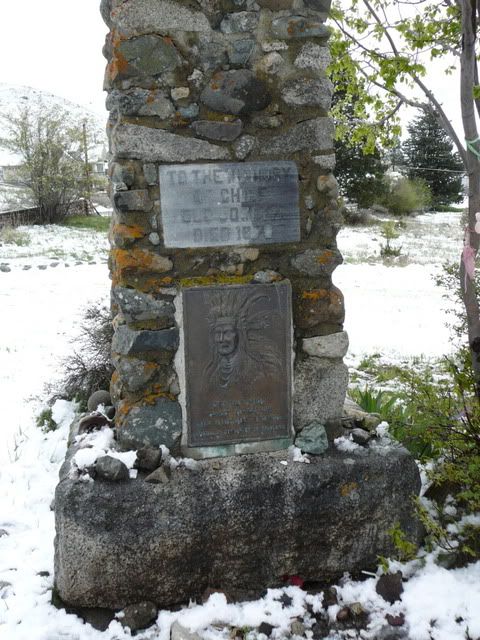
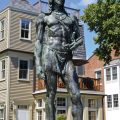
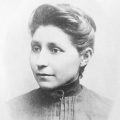
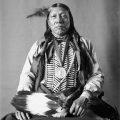
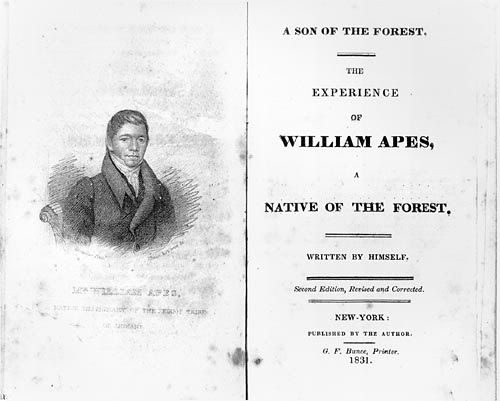
Leave a Reply